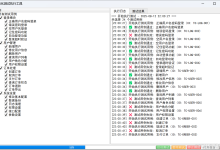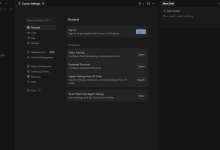在 Cursor 中配置自定义 MCP 服务器:打造你的 AI 开发工具链
引言
随着 AI 编程助手的普及,开发者们越来越希望能够定制化自己的开发环境。Cursor 作为一款强大的 AI 编程编辑器,提供了 Model Context Protocol (MCP) 支持,新版本的MCP配置采用json文件配置方式,与老版本配置方式不同。
什么是 MCP?
Model Context Protocol (MCP) 是一种协议,用于连接本地或远程的 AI 模型和服务。它通过标准输入输出(stdio)进行通信,使用 JSON-RPC 2.0 协议格式,让开发者能够扩展 Cursor 的功能,集成自己的 AI 工具。
MCP 的核心优势在于:
- 标准化协议:统一的 JSON-RPC 2.0 格式
- 本地集成:无需额外的网络服务
- 灵活扩展:支持自定义工具和功能
- 安全可靠:本地运行,数据不外泄
Cursor MCP 配置基础
配置文件位置
Cursor 的 MCP 配置存储在用户设置中,通常位于:
- Windows: %APPDATA%\\.Cursor\\mcp.json
配置结构
MCP 配置采用 JSON 格式,基本结构如下:
{
"mcpServers": {
"server-name": {
"command": "python",
"args": ["script.py"],
"cwd": "/path/to/script/directory"
}
}
}
配置参数说明
- mcpServers: MCP 服务器配置的根节点
- server-name: 服务器名称,用于标识不同的 MCP 服务
- command: 启动命令,通常是 python、node 等
- args: 命令行参数数组,指定要执行的脚本
- cwd: 工作目录,脚本文件所在的绝对路径
实战:配置 AI Commit Message 生成器
让我们以一个实用的 AI Commit Message 生成器为例,展示完整的 MCP 配置过程。
项目结构
AI-commit-msg-MCP/
├── cursor_mcp_server_v2.py # MCP 服务器脚本
├── ai_commit.py # AI 生成逻辑
├── requirements.txt # Python 依赖
└── README.md # 项目说明
1. 创建 MCP 服务器脚本
首先,我们需要创建一个符合 MCP 协议的服务器脚本:
#!/usr/bin/env python3
"""
Cursor MCP Server – AI Commit Message 生成器
"""
import json
import sys
import os
import git
from typing import Dict, Any, Optional
from ai_commit import AICommitGenerator
class CursorMCPServer:
def __init__(self):
self.ai_generator = AICommitGenerator()
self.request_id = 0
self.initialized = False
def send_response(self, result: Any = None, error: Any = None):
"""发送响应给Cursor"""
response = {
"jsonrpc": "2.0",
"id": self.request_id
}
if error:
response["error"] = error
else:
response["result"] = result
print(json.dumps(response), flush=True)
def handle_initialize(self, params: Dict[str, Any]):
"""处理初始化请求"""
self.initialized = True
self.send_response({
"protocolVersion": "2024-11-05",
"capabilities": {
"tools": {}
},
"serverInfo": {
"name": "ai-commit-mcp",
"version": "1.0.0"
}
})
def handle_tools_list(self, params: Dict[str, Any]):
"""处理工具列表请求"""
if not self.initialized:
self.send_response(error={
"code": –32002,
"message": "Server not initialized"
})
return
tools = [
{
"name": "generate_commit_message",
"description": "Generate a commit message based on git diff",
"inputSchema": {
"type": "object",
"properties": {
"diff": {
"type": "string",
"description": "Git diff content (optional)"
},
"repo_path": {
"type": "string",
"description": "Repository path",
"default": "."
}
}
}
},
{
"name": "get_commit_prompt",
"description": "Get commit message prompt data for Cursor AI",
"inputSchema": {
"type": "object",
"properties": {}
}
},
{
"name": "get_staged_diff",
"description": "Get current git staged diff",
"inputSchema": {
"type": "object",
"properties": {
"repo_path": {
"type": "string",
"description": "Repository path",
"default": "."
}
}
}
}
]
self.send_response({"tools": tools})
def handle_tools_call(self, params: Dict[str, Any]):
"""处理工具调用请求"""
if not self.initialized:
self.send_response(error={
"code": –32002,
"message": "Server not initialized"
})
return
tool_name = params.get("name")
tool_args = params.get("arguments", {})
try:
if tool_name == "generate_commit_message":
# 处理生成 commit message 的逻辑
diff = tool_args.get("diff", "")
repo_path = tool_args.get("repo_path", ".")
if diff:
prompt_data = self.ai_generator.get_commit_prompt_data(diff, repo_path)
else:
diff = self.ai_generator.get_staged_diff(repo_path)
prompt_data = self.ai_generator.get_commit_prompt_data(diff, repo_path)
self.send_response({
"content": [
{
"type": "text",
"text": f"Commit message prompt generated successfully.\\n\\n**Prompt for Cursor AI:**\\n\\n{prompt_data['prompt']}"
}
]
})
elif tool_name == "get_commit_prompt":
# 获取当前 staged changes 的提示词
diff = self.ai_generator.get_staged_diff()
prompt_data = self.ai_generator.get_commit_prompt_data(diff)
self.send_response({
"content": [
{
"type": "text",
"text": f"Commit prompt data retrieved.\\n\\n**Prompt for Cursor AI:**\\n\\n{prompt_data['prompt']}"
}
]
})
elif tool_name == "get_staged_diff":
# 获取当前 git staged diff
repo_path = tool_args.get("repo_path", ".")
diff = self.ai_generator.get_staged_diff(repo_path)
if diff:
self.send_response({
"content": [
{
"type": "text",
"text": f"Current staged diff:\\n\\n```diff\\n{diff}\\n```"
}
]
})
else:
self.send_response({
"content": [
{
"type": "text",
"text": "No staged changes found."
}
]
})
else:
self.send_response(error={
"code": –32601,
"message": f"Tool not found: {tool_name}"
})
except Exception as e:
self.send_response(error={
"code": –32603,
"message": f"Error calling tool {tool_name}: {str(e)}"
})
def handle_request(self, request: Dict[str, Any]):
"""处理请求"""
method = request.get("method")
params = request.get("params", {})
self.request_id = request.get("id", 0)
if method == "initialize":
self.handle_initialize(params)
elif method == "tools/list":
self.handle_tools_list(params)
elif method == "tools/call":
self.handle_tools_call(params)
else:
self.send_response(error={
"code": –32601,
"message": f"Method not found: {method}"
})
def run(self):
"""运行MCP服务器"""
print("AI Commit MCP Server started", file=sys.stderr)
for line in sys.stdin:
try:
request = json.loads(line.strip())
self.handle_request(request)
except json.JSONDecodeError as e:
print(f"Invalid JSON: {e}", file=sys.stderr)
continue
except Exception as e:
print(f"Error processing request: {e}", file=sys.stderr)
continue
if __name__ == "__main__":
server = CursorMCPServer()
server.run()
2. Cursor MCP 配置
在 Cursor 的设置中添加以下配置:
{
"mcpServers": {
"ai-commit-mcp": {
"command": "python",
"args": ["cursor_mcp_server_v2.py"],
"cwd": "D:/myproject/AI-commit-msg-MCP"
}
}
}
3. 配置说明
- ai-commit-mcp: 服务器名称,可以自定义
- command: 使用 Python 解释器
- args: 指定要执行的脚本文件
- cwd: 脚本文件所在的绝对路径(注意使用正斜杠)
4. 重启 Cursor
配置完成后,必须重启 Cursor 才能生效。
使用自定义 MCP 工具
验证配置
重启 Cursor 后,你应该能在工具面板中看到 3 个新工具:
- generate_commit_message
- get_commit_prompt
- get_staged_diff
在聊天中使用
在 Cursor 的 AI 聊天中,你可以直接使用这些工具:
请帮我生成一个 commit message
AI 会自动调用相应的工具来获取 git diff 并生成提示词。
手动调用工具
你也可以明确指定要使用的工具:
请使用 get_commit_prompt 工具获取当前的 commit 提示词
高级配置技巧
1. 多服务器配置
你可以配置多个 MCP 服务器:
{
"mcpServers": {
"ai-commit-mcp": {
"command": "python",
"args": ["cursor_mcp_server_v2.py"],
"cwd": "D:/myproject/AI-commit-msg-MCP"
},
"code-analyzer": {
"command": "node",
"args": ["analyzer.js"],
"cwd": "C:/tools/code-analyzer"
},
"test-generator": {
"command": "python",
"args": ["test_gen.py"],
"cwd": "/home/user/test-tools"
}
}
}
2. 环境变量配置
如果需要传递环境变量,可以添加 env 配置:
{
"mcpServers": {
"ai-commit-mcp": {
"command": "python",
"args": ["cursor_mcp_server_v2.py"],
"cwd": "D:/myproject/AI-commit-msg-MCP",
"env": {
"OPENAI_API_KEY": "your-api-key",
"DEBUG": "true"
}
}
}
}
3. 不同操作系统的路径配置
为了跨平台兼容,建议使用正斜杠:
{
"mcpServers": {
"ai-commit-mcp": {
"command": "python",
"args": ["cursor_mcp_server_v2.py"],
"cwd": "D:/myproject/AI-commit-msg-MCP"
}
}
}
故障排除
常见问题
工具显示为 0 个
- 检查配置文件路径是否正确
- 确保脚本文件存在且有执行权限
- 重启 Cursor
工具调用失败
- 检查 Python 环境是否正确
- 查看 Cursor 输出面板的错误信息
- 确保依赖包已安装
路径问题
- 使用绝对路径
- 避免路径中包含中文字符
- 使用正斜杠作为路径分隔符
调试技巧
查看 Cursor 输出面板
- 打开 Cursor 的输出面板
- 查看 MCP 相关的日志信息
测试 MCP 服务器
- 创建测试脚本验证服务器功能
- 确保 JSON-RPC 协议实现正确
检查文件权限
- 确保脚本文件可读可执行
- 检查工作目录权限
最佳实践
1. 项目组织
- 将 MCP 服务器脚本放在独立的目录中
- 使用版本控制管理配置
- 创建详细的文档说明
2. 错误处理
- 实现完善的错误处理机制
- 提供有意义的错误信息
- 记录详细的日志信息
3. 性能优化
- 避免在工具调用中执行耗时操作
- 使用异步处理处理复杂任务
- 合理缓存计算结果
4. 安全性
- 验证输入参数
- 避免执行危险操作
- 保护敏感信息
扩展思路
1. 集成更多 AI 服务
你可以基于 MCP 协议集成各种 AI 服务:
- 代码审查工具
- 文档生成器
- 测试用例生成器
- 性能分析工具
2. 创建工具链
将多个 MCP 服务器组合成完整的开发工具链:
- 代码分析 → 测试生成 → 文档更新
- 提交信息生成 → 代码审查 → 部署
3. 社区贡献
将你的 MCP 工具开源,供其他开发者使用:
- 发布到 GitHub
- 创建详细的安装文档
- 提供示例和教程
总结
Cursor 的 MCP 功能为开发者提供了强大的扩展能力,让我们能够定制化自己的 AI 开发环境。通过本文的介绍,你应该已经了解了如何配置和使用自定义 MCP 服务器。
关键要点:
随着 AI 编程助手的发展,MCP 协议将成为连接各种 AI 工具的重要桥梁。掌握 MCP 配置技能,将让你在 AI 编程时代拥有更强的竞争力。
开始你的 MCP 之旅,打造属于你的 AI 开发工具链吧!
 网硕互联帮助中心
网硕互联帮助中心





评论前必须登录!
注册